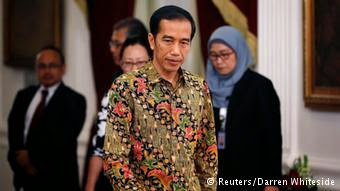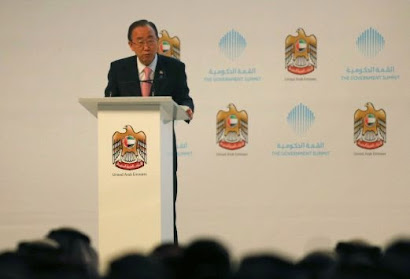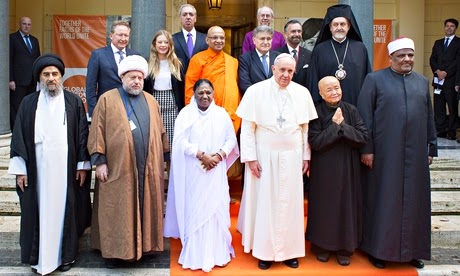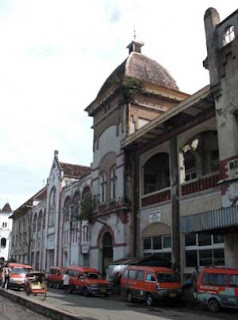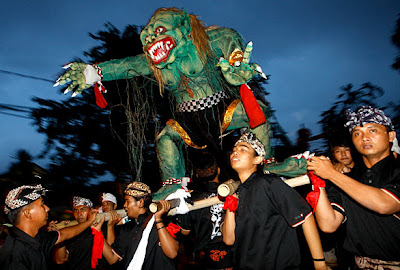The Jakarta Globe, Lisa Siregar, March 26, 2009
Dressed in a yellowish orange kebaya encim, a traditional Betawi blouse for women, an old woman stands out in a crowd on a humid late February afternoon at Vihara Nimmala, a Buddhist temple in Tangerang, South Jakarta.

She looks unsure of what to do. A group of gambang kromong musicians are on the stage in front of her, preparing to perform as part of a dance competition for contestants aged 55 and older.
A young woman comes up to her. “Gran, here’s your number,” she says, pinning a number on the older woman’s chest. “The competition will start in a minute, and they will call your name.”
The old woman nods distractedly, her eyes still on the stage. A few minutes later, to check their sound levels, the musicians begin playing the introduction of a traditional song. Kuru, 62, smiles toothlessly and starts to dance. She may not sway as seductively as the young dancers do, but she doesn’t miss a beat.
According to JJ Rizal, a historian at the University of Indonesia, the tradition of gambang kromong, in which Indonesian percussion instruments, such as gambang, or xylophones, and gongs, are played alongside Chinese string instruments, began after the “Chinese Riots,” known in Dutch as the Chineesche troebelen.
That occurred in 1740 after the Dutch East India Company — the Vereenigde Oost-Indische Compagnie in Dutch — began deporting unemployed Chinese immigrants to Ceylon, now Sri Lanka, and taking steps to curtail the Chinese trading community, which was becoming a threat to the company’s authority and commercial might.
The Chinese responded with protests and threatened armed rebellion, and in the Dutch attempt to quell the outburst, thousands of Chinese were killed.
The worst of the conflict was over after three years and the community tried to rebuild and move on. “After the riots, there was a reconciliation between the Dutch and the Chinese in Batavia,” Rizal says.
Gambang kromong was developed as a celebration of the reconciliation, and the Chinese community took it as a sign that they were accepted back into the fold of Dutch Indonesia.
Gambang kromong performances were first held at the house of a rich Chinese merchant in Batavia as accompaniment to family lunches.
“Back then, there was no singing in gambang kromong, only calm and clear instrumentals,” Rizal says. “Later, when rumah nyanyi [singing houses] started to appear in Batavia, the nature of gambang kromong started to change.”
Members of the middle and upper classes would go to rumah nyanyi to enjoy gambang kromong and other performances, and they started adding lyrics and singing to the instrumentals. “People called the singer chiou-kek, or wayang chiou-kek, which became cokek later on,” Rizal says.
“After 1880, people started to soder [give a shawl to a singer, or accept one from them, as a sign of asking for a dance], and ngibing [dance together], and then finally sawer [give money to the singer/dancer as a tip].”
Over the next century, things continued to change and the focus became less and less on singing, and more on dancing.
Today, the word cokek is more widely understood as a dance or dancer, rather than a singer, and because of the exchange of money, it has been identified with sex workers. However, the Betawi-Chinese community still keeps the tradition as entertainment for festivities such as those around Chinese New Year and Independence Day.
Gambang kromong also commonly occurs at traditional Betawi-Chinese wedding parties. In Tangerang, there is a rumah kawin, or wedding house, that has a group of gambang kromong players, singers and dancers.
Rizal says that when community members participate in gambang kromong, it reminds them to hold on to their identities as Betawi-Chinese.
At Vihara Nimmala, Kuru, the toothless old dancer, sits down to talk to us after her dance. She says she used to be part of a gambang kromong troupe that performed in Jakarta in the 1970s. For her, cokek was only ever about dancing and she never sang as part of her performances.
“There were 20 of us, 15 musicians, 5 dancers,” she says. “They’re all dead now.”
The group traveled to performances on a truck, she says, as they needed to take their instruments with them. Kuru never took lessons in the traditional dance style but learned from watching others.
In her early years, she was paid Rp 20,000 ($1.75) per performance, which “was quite a lot at that time.” Until her last professional performance in the ’80s, the most she ever received was Rp 100,000.
“I have stopped ngibing [professionally] since my husband died,” she says.
Kuru now lives in Kali Sabi, Tangerang, with her child, earning money from giving massages and occasionally selling home-baked cakes.
E Eng, a 70-year-old contestant, only started dancing four years ago, after her husband died.
“I do ngibing to release my stress,” she says.
Masnah, 85 years old, is an honored guest at the competition, held at the temple as part of a three-day festival celebrating the 320th anniversary of the Earth God’s birth.
Masnah has been a cokek performer since she was 14 years old and was a member of the famous Irama Masa group. The group performed in many other provinces and even toured Singapore, Australia and other countries, she says, to present gambang kromong.
“All the [other] members are dead, there’s only me now,” Masnah says.
She was married to a gambang instrument player and maker so they shared a love of the tradition.
“Since [my husband] passed away, we sold all his instruments,” she says.
According to Rizal, who researched gambang kromong five years ago for an article in a Dutch magazine, Masnah is the only prominent cokek figure left.
“I think she’s the only one who still can sing lagu dalem [gambang kromong songs not intended for dancing]. Philip Yampolsky recorded her singing,” Rizal says.
Yampolsky is an ethnomusicologist who from 1991 to 1999 worked with the Indonesian Society for the Performing Arts and Smithsonian Folkways Recordings to produce a 20-CD series called Music of Indonesia. A CD focusing on gambang kromong was third in the set.
Rizal explains that lagu dalem and lagu sayur are two different types of songs in gambang kromong. Lagu dalem songs are calm and soothing tunes, while lagu sayur are popular songs intended for dancing.
Masnah now struggles with health problems that have stopped her from performing regularly, but manages to sing one song at the dance competition.
“Her last performance was two years ago, she was invited to sing in an event at Singapore. Now she does not dance and sing anymore, she’s been sick the past couple of years,” her son Kocit says.
These days, the traditional song forms are seldom sung and most gambang kromong players mix in pop and dangdut tunes. The changing form of cokek, Rizal says, is a natural thing.
“To mix with pop and dangdut is a way for gambang kromong to survive.”
The ’70s and ’80s, a booming era for dangdut music in Indonesia, was also the time when most cokek moved completely from singing to dancing.
“[The cokek] are denying their own fate to sing,” Rizal says. “Today, all they have to do is to put on thick makeup and ngibing.”
The contestants in this event at Vihara Nimmala did not need to be professional dancers but need to appear in traditional costume. Red and yellow shawls — for inviting people to dance with them — are provided for the top 10 finalists, and the audience shows their appreciation of the elderly dancers clearly.
The dancers themselves, including Kuru, E Eng and some male performers, all seem to greatly enjoy the afternoon.
When Masnah starts singing “Rembulan Terang di Bandung” (Moonlight at Bandung), Kuru begins to dance and a few contestants and audience members step into the spacious area in front of the stage to follow her moves.
At times, the old lady sings along to the lyrics, while moving in harmony with the beat. She does not win the competition, but says she isn’t upset.
“I just like to ngibing, that’s all.”
Photo: Senior dance contestants show they still have the moves, despite their age. (Afriadi Hikmal, JG)
